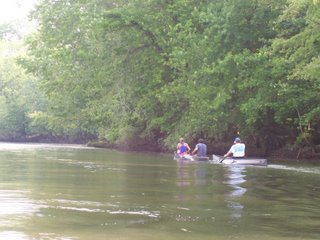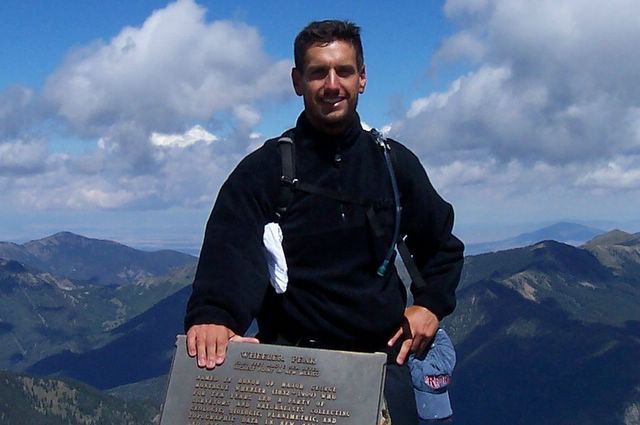Paddling to a "Great Place" in Cromwell
 Standing shin-deep in mud, I had either been overeager or impatient or just plain skeptical that the tide could make that much of a difference here in the woods of Cromwell. Or maybe I was still baffled by how water this calm could have once powered a mill. I could even blame that great blue heron that had climbed into the air the moment before I mis-stepped on the cinder blocks of the ramp. Those two red-wings that flashed by were also kind of distracting. Either way, I was twenty miles inland from the Sound and three miles west of the Connecticut River, and I still almost lost a shoe while launching my kayak in the low water of the Mattabesset River.
Standing shin-deep in mud, I had either been overeager or impatient or just plain skeptical that the tide could make that much of a difference here in the woods of Cromwell. Or maybe I was still baffled by how water this calm could have once powered a mill. I could even blame that great blue heron that had climbed into the air the moment before I mis-stepped on the cinder blocks of the ramp. Those two red-wings that flashed by were also kind of distracting. Either way, I was twenty miles inland from the Sound and three miles west of the Connecticut River, and I still almost lost a shoe while launching my kayak in the low water of the Mattabesset River.But I had hoped for a little adventure on my trip to what the Nature Conservancy has called one of the "last great places of the Western Hemisphere."
With over 360 acres of wetland, the Cromwell Meadows Wildlife Management Area is one of the largest refuges in the lower Connecticut River watershed, and is an important habitat for a number of rare and endangered species, ranging from osprey to lamprey.
Despite the tide’s influence here, Cromwell Meadows is a freshwater habitat and is part of a larger system so unique that it has even gained global recognition. Thirty five years ago in Ramsar, Iran, countries concerned with protecting aquatic wildlife met for the first Convention on Wetlands of International Importance, Especially as Waterfowl Habitat. Simply known as Ramsar today, there are currently 1,550 sites recognized by this alliance, places like the Everglades, the Chesapeake Bay and our own Connecticut River Estuary and Tidal Wetlands Complex, which includes Cromwell Meadows.
I shoved off behind the old Saw Mill Pub on Route 3, the beginning of the Mattabesset River Canoe and Kayak Trail. On the two-mile trip down river to Cromwell Meadows, I welcomed the respite that the woods offered from last Monday’s heat. Shafts of sunlight plunged to the bottom of the river, taking on the color of ale all the way down to the floor. This amber sediment is left churning from the tides and floods of spring that cut deep into the banks of the Mattabesset. Undermined trees hang on for years while apical dominance pulls them to angles that resemble elephant trunks in full blast.
Also, my pre-paddle bird encounters were no fluke. Large stick nests sit on these low-hanging limbs while dozens of nesting boxes and platforms rise along the river. Tree swallows, with their grackle-green capes, followed me the way gulls do a ferry while blue jays pressed subtle tracks into the mud. I hoped to see some mammals, too, but the only signs were the conically chewed stumps sticking from the banks like sharpened pencils.
Though cluttered with a lot of natural debris, the banks of the Mattabesset are clean, and despite the trees that have actually landed in the river, the water trail is free of portages. The Mattabesset River Watershed Association has been tending the water here for years. The main pollutants have been nonpoint- invisible ones like runoff from pavement- but I still noticed very little trash compared to one of my favorite waterways, the Quinnipiac River. At a cleanup there last year, I myself pulled nearly forty tires, some of them whitewalls, from its flood plain in Meriden, not to mention parts of cars that James Dean might have abandoned there himself.
Leaving the woods, the passage became hot and exposed, though the breeze was picking up off Boggy Meadow where the river widens. I was working a lot harder now to make any headway, the surface choppier in the bigger water of the meadows.
When the Arrigoni Bridge is visible, you know that the Connecticut River is just beyond the trees. The Appalachian Mountain Club’s canoe and kayak guide Quiet Water: Massachusetts, Connecticut & Rhode Island has paddlers starting the trip to Cromwell Meadows at Harbor Park on the Connecticut River in Middletown. By launching here at the terminus of the MRCKT, you will have a shorter distance to the refuge, but you may also have to endure some rougher water at the start. Because of this, Quiet Water suggests that paddlers always use a PFD here. Or, when the Connecticut is too rough, save the trip altogether for another day.
For my trip, I used two online guides to the Mattabesset: http://www.mrwa-ct.org/ and http://www.conservect.org)/ each offer downloadable brochures containing essential information on trip logistics, history, maps and possible wildlife sightings.
I myself was interested in seeing a green heron, which I had read about on one of these sites. Instead, I watched two swans as they skimmed effortlessly over the rippling water. I had stopped paddling except to steer and was waiting for the chance to photograph some birds at close range. I especially wanted a great blue heron to show itself up close. I had seen them all along my trip, flushing from the high grass, disappearing over the trees, then returning like a boomerang only to land where they took off in the first place. But because their silent flight contradicts their huge presence, I had to turn back without my shot.
Backtracking on a river lacks the repetition emblematic of an out-and-back hike. You’re less mobile in a boat, so your range of vision is limited and therefore some sights are kept for the way home. It’s a whole new experience when you’re returning. Wind shifts, sunlight fades and tides rise and fall. I’ll have to keep the latter in mind for next time.


